
The Australian Government has approved the acquisition of eight Boeing P-8A Poseidon maritime surveillance aircraft at an investment of about A$4 billion (US$3.6 Billion).
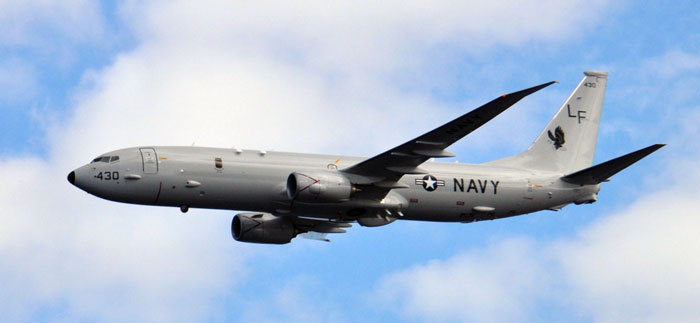
The new fleet is expected to become fully operational in 2021. Together with high-altitude unmanned aerial vehicles, these aircraft will replace the Royal Australian Air Force AP-3C Orions that have served Australia so well for over four decades.
There are 18 Orions in service with the Royal Australian Air Force (RAAF). Delivered in the late 1970s the Aussie Orions fleet went through a comprehensive upgrade in the early 2000s, improving radar, ESM and other avionic capabilities.
Manned-Unmanned Team
The replacement of those aircraft comes under the Australian Defence Force’s (ADF) Project Air 7000 plan estimated to cost about A$7 billion. Phase 2B outlines the manned element (Poseidon) plan with the follow-on phase 1B element defining the unmanned Broad Area Maritime Surveillance (BAMS) element. Phase B will cost about A$3 billion and include six or seven Northrop Grumman MQ-4C Triton High Altitude Long Endurance (HALE) drones. A formal announcement expected later in 2014.
“The P-8 gives us an unprecedented capability to find, fix and track both surface ships and submarines,” RAAF chief Air Marshal Geoff Brown
The purchase of Tritons was opposed in military circles in 2012, due to its inability to carry weapons. The new government has backed the procurement, particularly for its exceptional area coverage capacity – the US Navy claims a Triton can monitor an area of close to seven million square kilometres in one operation.
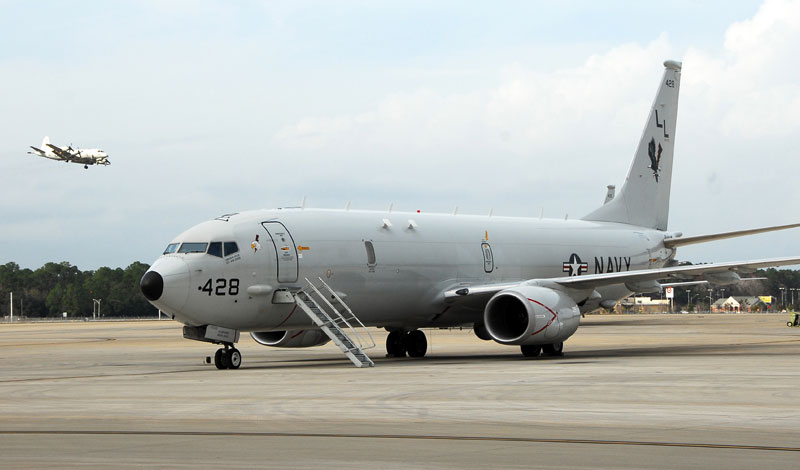
The Australian acquisition would be the second international Poseidon sale for Boeing and the first international sale for the Triton UAS. The first eight P-8I ‘Neptune’ were ordered by India in 2009 for US$2.1 billion. Three have already been delivered to India. Additional four aircraft were ordered in 2011.
Boeing is expected to hand over the first Australian P-8 in 2017, with all eight aircraft delivered and fully operational by 2021. The Australian Government has also approved an option for a further four aircraft subject to the outcomes of the Defence White Paper review.
Extending the Reach of Maritime Surveillance
“The P-8 gives us an unprecedented capability to find, fix and track both surface ships and submarines,” RAAF chief Air Marshal Geoff Brown said. The P-8A has an unrefuelled range of over 4,000 nautical miles (7,500 kilometres) or the ability to remain on station conducting low-level Anti Submarine Warfare (ASW)

missions for over four hours at a range of more than 1,200 nautical miles (2,200 km) from base. These aircraft can also be refuelled in flight, from the boom of tanker aircraft such as the KC-30A, pushing its endurance out to over 20 hours, making it possible to patrol Australia’s isolated Southern Ocean territories up to Antarctica.
In addition to patrolling Australia’s maritime approaches and supporting coalition operations in the Pacific Ocean, the Australian Poseidons will be tasked to conduct search and rescue; anti-submarine and maritime strike missions using torpedoes and Harpoon missiles.
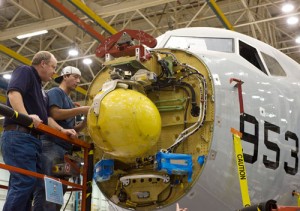
In addition to the military missions, Australia also need real-time surveillance in the vast sea areas north east of Australia, all the way to Sri-Lanka, to help find asylum seeker vessels on their way to Australia. On such non-military missions the Poseidon will work closely with the Australian Customs and Border Protection Service (ACBPS) aviation fleet, to secure ocean resources, including offshore energy resources off northern Australia.
Aussie P-8A to be More Mature Aircraft
The aircraft is equipped with the Raytheon APY10 maritime surveillance radar, providing all weather, day and night surveillance for surface, anti-submarine and anti-surface warfare as well as intelligence, surveillance and reconnaissance (ISR) mission support.
“Increment 2 will have sufficient capability to allow the RAAF to replace one squadron of AP-3Cs, achieving initial operational capability in 2019.”
[wlm_nonmember]Full version of this article is available for our subscribers
[/wlm_nonmember][wlm_ismember]According to the Pentagon test and evaluation report, the current configuration known as ‘Increment I’ is providing the aircraft maritime surveillance and Anti-Submarine Warfare (ASW) capabilities covering relatively small-areas. Lacking wide-area acoustic search capability, Poseidon must rely on cueing from other sensors when tasked in broad-area ASW surveillance. This capability gap should be fulfilled in the upcoming Increment II configuration expected later in the decade. Poseidon will also be able to carry eight Mk54 lightweight torpedoes.
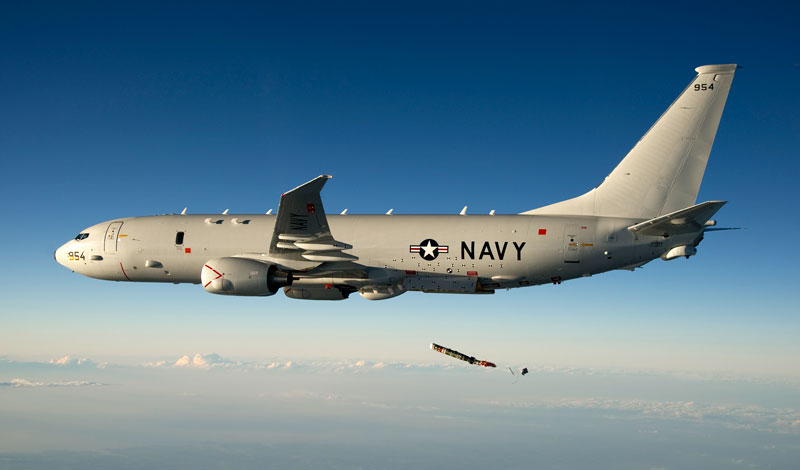
Additionally, it will carry AGM-84 Harpoon missiles under its wings, following the completion of integration and flight tests currently underway. Nevertheless, the efficiency of the APY10 radar and Electronic Support Measure (ESM) and Electronic Intelligence (ELINT) suite fall short in ISR missions as system integration, limited electronic intelligence libraries and insufficient resolution of radar imagery (SAR) overland is limiting the aircraft effectiveness as an ISR platform. These capabilities are expected to mature through the Increment 2 phase, scheduled for 2016. This upgrade will also include the introduction of multi-static active coherent acoustics, automated identification system (AIS).
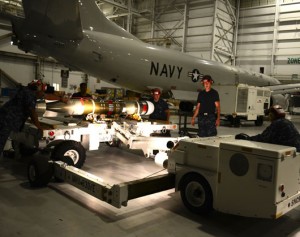
Increment II Poseidon will also be equipped for High Altitude Anti-Submarine warfare (HAASW), employing modified sonobuoy sensors to enhance the aircraft mission capability at higher than traditional fixed-wing airborne ASW altitudes. According to the US Navy Air Systems Command plan, operations at higher altitudes will enable greater communications range with large area buoy fields and greater coverage from other onboard non-acoustic sensors. The HAASW capability for P-8A to be integrated as part of the Increment 2 upgrade include geolocation support for GPS equipped sonobuoys, enhanced with GPS Drop Vector Algorithm (GDVA) and splash point prediction and tracking.
The aircraft will also be equipped with a new a ‘flying torpedo’, comprising a wing-kit from the Small Diameter Bomb (SDB) strapped to a standard Mk54 torpedo, enabling the aircraft to engage submarines from high altitude, long distance and from different directions.[/wlm_ismember]
Australia’s first P-8As are likely to be delivered in an increment 2 configuration, which adds acoustic equipment and a maritime automatic identification system capability to the USN’s baseline increment 1 aircraft now entering use. The future standard will have sufficient capability to allow the RAAF to replace one squadron of AP-3Cs, and should achieve initial operational capability in 2019.
Since 2007 Australia has invested about $250 million in the P-8A development, becoming a ‘minor partner’ in the US Navy lead program. Australian businesses have already won approximately $8.5 million of work associated with Australia’s participation in the P-8A program. According to Ministry of defence sources, Australian companies stand to benefit by as much as $1 billion through construction of facilities at RAAF Base Edinburgh in South Australia and elsewhere and work to meet maintenance and other support needs.
[wlm_nonmember]Additional photos attached to the full version:
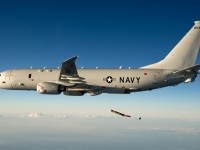
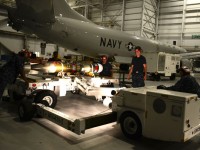
[/wlm_nonmember]
















